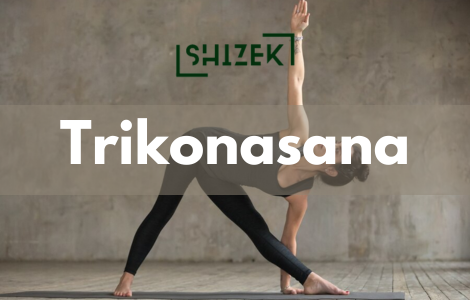All About Hot Yoga

Hot yoga, a vigorous form of yoga practiced in heated studios, has become increasingly popular. But before you grab your mat and crank up the heat, understanding its intricacies is essential. This guide explores everything you need to know about Hot Yoga, from its core principles to safety considerations.
Table of Content
- What is Hot Yoga?
- Steps to Do Hot Yoga
- Tips and Tricks for Hot Yoga
- Health Consideration for Hot Yoga
- Risks of Hot Yoga
What is Hot Yoga?
Hot Yoga is a form of yoga practiced in a heated room, typically around 95-105 degrees Fahrenheit, with a higher humidity level. This environment is designed to mimic the hot and humid climate of India, where yoga originated, and is believed to enhance the practice.
While sometimes used interchangeably, Hot Yoga isn’t synonymous with Bikram Yoga. Bikram Yoga is a specific style with a set sequence of 26 postures and two breathing exercises performed in a room heated to 105 degrees Fahrenheit (40.5 degrees Celsius) with 40% humidity.
Hot yoga studios, however, offer a wider variety of yoga styles in heated environments.
Benefits of Hot Yoga
- Improved Flexibility: The heat can help loosen tight muscles, allowing for a deeper stretch.
- Increased Strength: Holding poses in the heat can challenge and strengthen your muscles.
- Cardiovascular Benefits: The heat can elevate your heart rate, providing a cardiovascular workout.
- Stress Relief: Yoga’s focus on breath and mindful movement can promote relaxation and stress reduction.
- Detoxification: Sweating is a natural detoxification process, although the extent of toxin removal through sweat remains debatable.
Steps To Do Hot Yoga
- Hydration: Drink plenty of water before and after class to stay hydrated.
- Proper Attire: Wear light, breathable clothing suitable for hot conditions.
- Breathing: Focus on deep, controlled breathing throughout the practice.
- Mindfulness: Stay present and listen to your body’s limits to prevent overexertion.
- Cool Down: Allow time for a gradual cool down after the session to regulate body temperature.
Tips and Tricks for Hot Yoga
- Start Slow: Begin with shorter sessions to acclimate to the heat.
- Use Props: Utilize blocks, straps, or towels for support and comfort.
- Stay Consistent: Regular practice helps build endurance and adapt to the heat.
- Mindful Rest: Take breaks as needed and honor your body’s signals.
Health Consideration for Hot Yoga
- Dehydration: Ensure adequate hydration before, during, and after class.
- Heat Sensitivity: Individuals with heat-related conditions should consult a healthcare provider before attempting Hot Yoga.
- Pregnancy: Pregnant women should avoid Hot Yoga due to the risk of overheating.
- Medical Conditions: Those with cardiovascular issues or other health concerns should seek medical advice before practicing Hot Yoga.
Risks of Hot Yoga
- Overheating: Dehydration and overheating are potential risks in hot environments. Pay close attention to your body and take breaks if needed.
- Heatstroke: In extreme cases, hot yoga can lead to heatstroke, a serious medical condition.
- Muscle Strain: Pushing yourself too hard in the heat can increase the risk of muscle strain or injury.
- Dizziness: The combination of heat and exertion can cause dizziness. Be cautious and avoid rapid movements.
Conclusion
Hot Yoga offers a challenging and invigorating practice that can provide numerous physical and mental benefits when practiced mindfully. By following proper precautions, listening to your body, and seeking guidance when needed, individuals can safely enjoy the transformative effects of Hot Yoga on their overall well-being.
























































































































